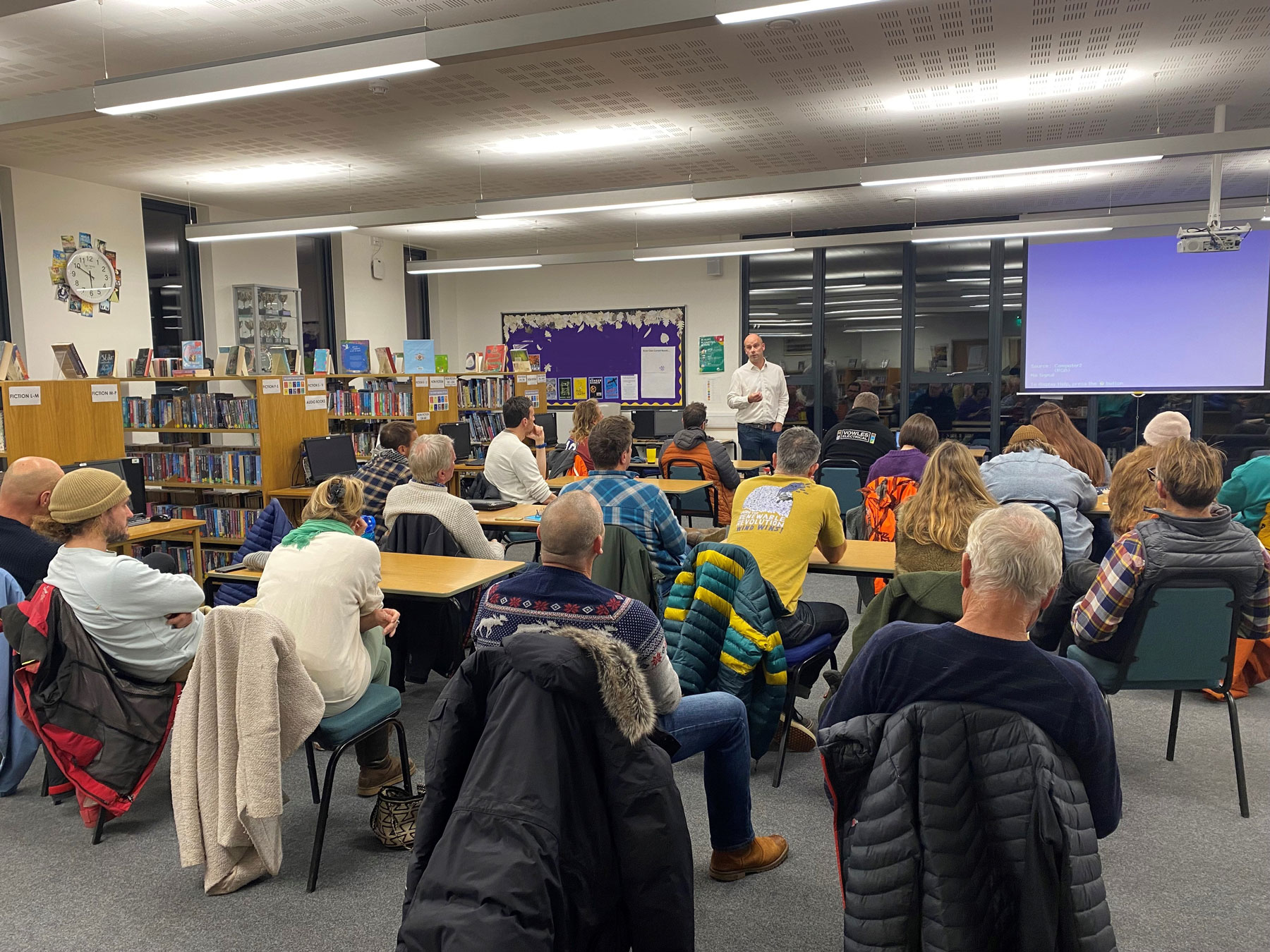
Surfs Up
February 2023
Working with the local surfing community in Devon to achieve positive outcomes.
When developing our offshore wind projects, collaboration with our local community always adds more value and provides better outcomes for all, that’s one of the main reason we are so passionate about engaging with the local community through our general public events ( Engaging with the local community to ensure Whitecross success – White Cross Offshore Wind).
The North Devon coastline is an important surfing location so any potential impact to the wave quality would naturally be a key concern for the local community. To ensure we heard these views, and took all points into consideration, we held an event last December (2022) to speak to the surfing community about the project and any interactions or impacts this could have on the surf environment.
There was a strong sentiment from all in attendance that renewable energy is essential to combat climate change and support energy security, however it was clear that this cannot be at the expense of the surfing resource, which is highly valued by the local community.
Our conversations were educational and interesting, and we listened carefully, taking onboard the opinions and suggestions of those in attendance. Local knowledge is essential to making this project a success and we will continue to work with the local community to ensure that any potential impacts to the surfing conditions are mitigated, whilst enabling the project to progress.
Highlighted below are a couple of the key discussion points from the event.
- Why is the chosen route preferred? Wouldn’t it make more sense to route up the estuary, which is closer to the substation location?
Through the development process, we have considered, reviewed and assessed over 20 different routes, balancing environmental, economic and engineering constraints. Pre-application consultation was undertaken with Statutory consultees on these potential routes to gain further input into the project development. Making landfall at the northern end of Saunton Beach was chosen as the preferred route for a number of factors relating to the criteria mentioned.
A route was assessed that would take power up the Taw Torridge Estuary and connect to the substation at East Yelland. It was discounted due to the significant risks and disruption to navigation, potential impacts on national and international designated sites and engineering constraints around ensuring the cables remained burred in what are geomorphologically more dynamic sands in this area.
- What work has been done to provide assurances that the project will not significantly impact wave environment?
White Cross is a small development of six to eight floating turbines over 50km from the North Devon coast. Previous wave studies on much larger fixed turbine developments much closer to the coast have shown no impact to the wave environment. Through the Environmental Impact Assessment process, the project team considered these studies as a highly conservative assessment of the likely impact of the development to the wave environment.
It is noted that existing studies are located on the east coast of England. To address concerns raised by the surfing community that these studies don’t adequately represent potential impacts local to the North Devon coast, we are working with the World Surfing Reserve and external consultants to identify what additional wave modelling can be undertaken to more accurately account for the differences on the West coast, and we hope to be able to update on that soon.
- How will the cable to brought to shore?
There are two methods that could be used to bring the cable onshore; either trenching across the beach or drilling under the beach. There are pros and cons of both approaches, and these are still being considered by the project team.
For further information on the project please contact: [email protected]

